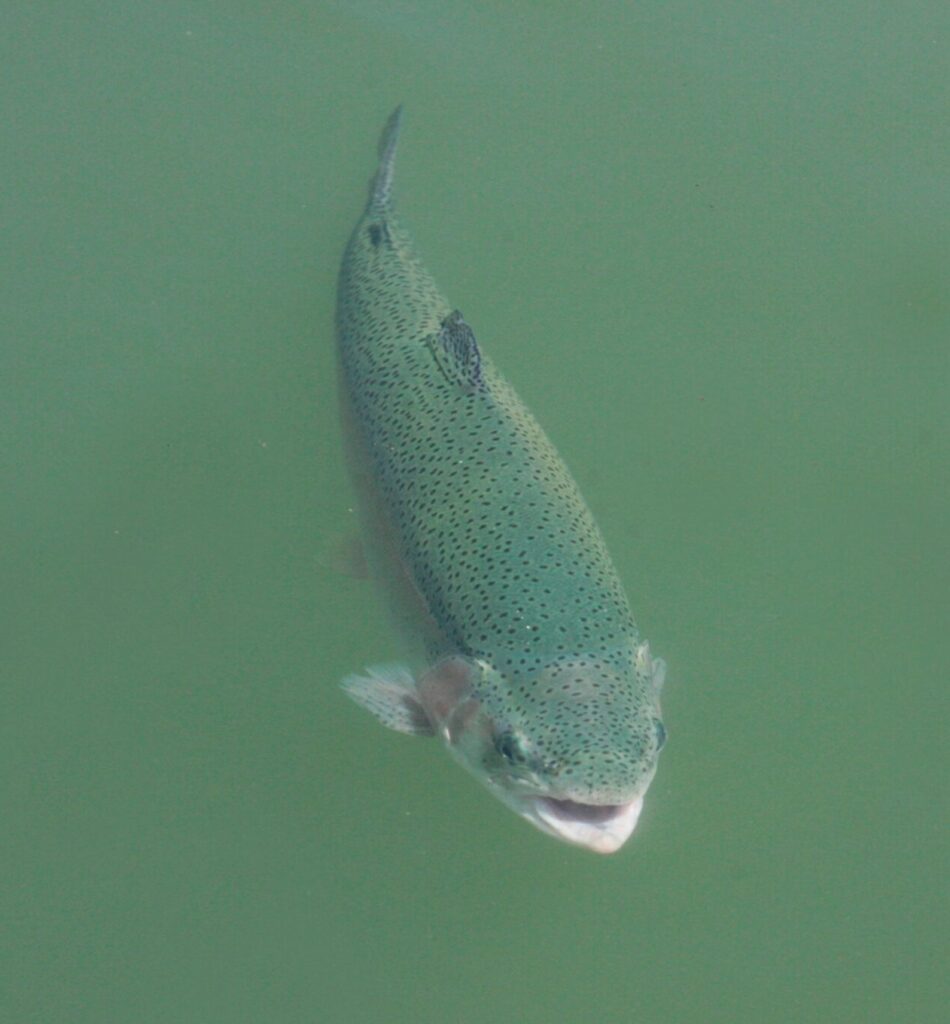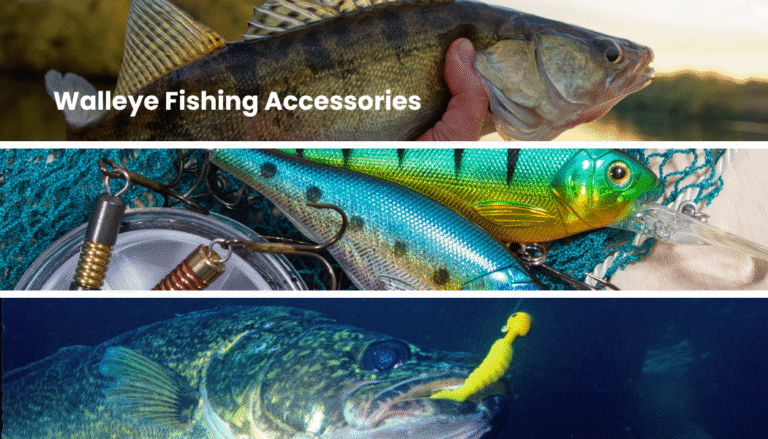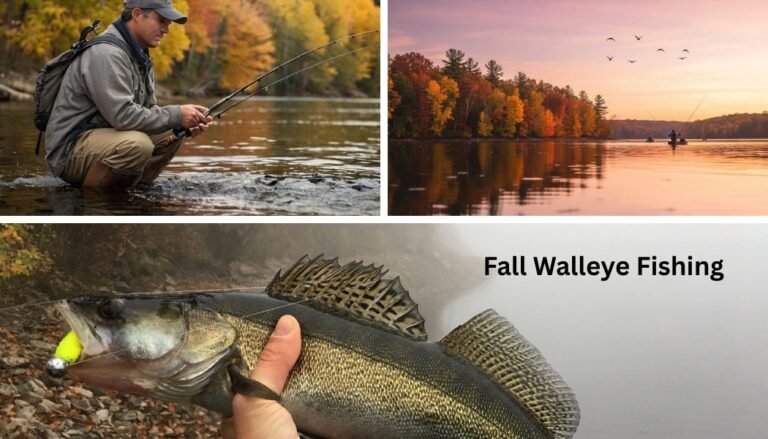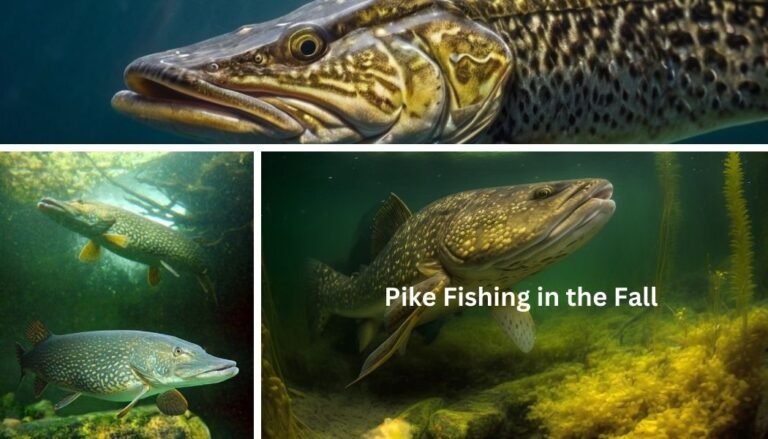Introduction to the Best Trout Fishing Baits
In the perplexing world of the best trout fishing baits, I eagerly invite you to join me on a thrilling journey to uncover the finest baits that nature and angling ingenuity have to offer. As an avid trout fisherman and content creator, I’ve dedicated countless hours to mastering the art of enticing these elusive beauties.
This comprehensive guide will explore a curated selection of the top 20 trout fishing baits, each chosen for its effectiveness, versatility, and ability to provoke voracious strikes. From natural wonders that harness the irresistible allure of live prey to artificial marvels meticulously designed to deceive even the wariest trout, we’ll leave no stone unturned in our quest for angling excellence. So, gear up, anglers, as we embark on an enlightening exploration of trout fishing essentials, poised to elevate your angling game to new heights.
Natural Baits
Nightcrawlers: Nature’s Seductive Allure in a Wriggling Form
Nightcrawlers, also known as earthworms, are the most iconic and widely used bait in trout fishing. Their irresistible wriggling motion and natural scent make them a favorite among anglers seeking to entice trout. These versatile baits can be presented in various ways, from threading them onto a hook to using them as a trailer behind a spinner or spoon. Nightcrawlers are particularly effective in streams and rivers, where they mimic the movement of natural prey, drawing in hungry trout lurking in the depths.
Mealworms: Tiny Titans That Beckon Trout with Irresistible Charm
Mealworms, the larvae of darkling beetles, may be small in size, but they pack a powerful punch when it comes to attracting trout. Their soft bodies and high protein content make them a nutritious and enticing snack for hungry trout. Anglers often use mealworms as bait for smaller trout or when targeting finicky fish in heavily pressured waters. Whether fished on their own or combined with other baits, mealworms have earned their place in the angler’s arsenal as a reliable option for enticing bites.

Minnows: Agile Swimmers That Tantalize with Lifelike Movement
Live minnows (check your regulations before using), such as shiners or chubs, are prized for their lifelike swimming action and natural appearance, making them irresistible to predatory trout. Anglers often employ minnows as bait when targeting larger trout or in situations where a more substantial offering is needed to provoke a strike. Rigged on a hook or used with a bobber or float, minnows can be presented in various ways to mimic injured or struggling prey, triggering aggressive strikes from hungry trout.
Crickets: Chirping Wonders That Captivate Trout with Their Vivacity
Crickets or grasshoppers, with their lively hopping, are a favorite summertime bait for trout fishing. Their natural movements and audible cues make them highly effective at attracting trout, especially in shallow, clear waters where lurking fish can easily detect their presence. Anglers often fish crickets using light tackle and subtle presentations, allowing the bait to drift naturally with the current or subtly twitch it to mimic the movements of struggling insects. Whether fished solo or in combination with other baits, crickets offer a tantalizing option for anglers seeking to tempt wary trout.
Waxworms: Small Yet Mighty Morsels That Provoke Voracious Strikes
Waxworms, the caterpillar larvae of wax moths, may be tiny, but they are highly prized for their high-fat content and sweet flavor, making them irresistible to trout. Anglers often use waxworms as bait when targeting smaller trout or in situations where a finesse presentation is required to entice bites. Whether threaded onto a small hook or tipped onto a jig, waxworms have a knack for eliciting strikes from even the most cautious trout, making them a valuable addition to any angler’s tackle box.
In summary, natural baits offer anglers diverse options for enticing trout, each with unique characteristics and benefits. Whether fishing with nightcrawlers, mealworms, minnows, crickets, or waxworms, anglers can harness the natural allure of these baits to tempt even the most discerning trout and create unforgettable angling experiences.
Artificial Baits
Spinners: Dazzling Lures That Hypnotize Trout with Their Twirling Dance
Spinners are iconic artificial trout lures renowned for their effectiveness in enticing trout. Consisting of a metal blade that spins as it moves through the water, spinners emit vibrations and flashes of light that mimic the movements of fleeing prey. This action triggers predatory instincts in trout, prompting aggressive strikes. Anglers have many spinner designs to choose from, including inline spinners, spinnerbaits, and spinner spoons, each offering unique characteristics and advantages.
Depending on the trout species and the prevailing conditions, anglers can vary the size, color, and blade configuration of spinners to match the preferences of feeding fish. Whether retrieved steadily or twitched erratically, spinners can be fished at varying depths and speeds to entice rainbow trout in rivers, streams, and lakes alike, making them a versatile and indispensable bait in every angler’s tackle box.
Spoons: Gleaming Temptations That Provoke Aggressive Strikes
Spoons are classic artificial baits characterized by their curved shape and reflective surfaces. These lures mimic the appearance of injured baitfish, making them irresistible to predatory trout. Available in a wide range of sizes, finishes, and colors, spoons can be customized to match the prevailing conditions and preferences of trout. When retrieved, spoons flutter and wobble enticingly, drawing attention to their lifelike appearance and triggering aggressive strikes.
Anglers can experiment with different retrieval techniques, including steady retrieves, erratic jerks, and pauses, to simulate the movements of injured prey and provoke reactionary strikes from nearby trout. Whether cast and retrieved or trolled behind a boat, spoons excel at enticing trout in freshwater lakes and rivers, making them a favorite among anglers targeting trophy-sized brown trout.
Jigs: Versatile Baits That Dance Tantalizingly in the Water Column
Jigs are highly versatile artificial baits with a weighted head and a trailing hook adorned with various materials such as feathers, fur, or soft plastic bodies. Designed to imitate the natural movements of prey species like insects, crayfish, and baitfish. Jigs can be presented in various ways to entice trout throughout the water column.
Anglers can fish jigs using a jigging motion, bouncing them along the bottom to mimic the behavior of bottom-dwelling prey or retrieve them steadily through the water to imitate the swimming action of injured baitfish. The versatility of jigs makes them effective in a wide range of fishing scenarios, from casting to drifting, jigging, and trolling, making them a favorite among anglers seeking consistent success in diverse trout habitats.
Soft Plastic Baits: Mimicking Nature’s Wonders with Uncanny Precision
Soft plastic baits encompass a diverse range of artificial lures designed to imitate the appearance and behavior of natural prey species. From lifelike grubs and worms to realistic tubes and creature baits, soft plastics come in various shapes, sizes, and colors to match the preferences of feeding trout. Anglers can rig soft plastics on a jig head, Texas rig, Carolina rig, drop shot rig, or other fishing rigs, allowing for versatile presentations in various fishing scenarios.
Whether fished on the bottom, suspended in the water column, or retrieved steadily through the water, soft plastics excel at eliciting strikes from trout by mimicking the subtle movements and textures of their natural prey. With endless customization options and a proven track record of success, soft plastics are a must-have bait for anglers looking to outsmart wary trout in any fishing environment.
Crankbaits: Vibrant Lures That Evoke Predatory Instincts in Trout
Crankbaits are dynamic artificial lures characterized by their realistic appearance, lifelike swimming action, and internal rattles emitting underwater vibrations and sound. Available in various shapes, sizes, and diving depths, hard baits can be tailored to match the prevailing conditions and preferences of trout. Anglers can choose from shallow-running, medium-diving, or deep-diving crankbaits, depending on the depth at which trout are feeding. When retrieved, crankbaits dart and dive erratically through the water, mimicking the movements of injured baitfish and triggering predatory instincts in nearby trout. Whether cast and retrieved, trolled behind a boat, or worked along structure and cover, crankbaits excel at enticing aggressive strikes from opportunistic trout, making them a valuable addition to any angler’s arsenal.
Fly Fishing Baits
Dry Flies: Floating Delicacies That Deceive Trout with Their Lifelike Appearance
Dry flies are the most iconic and visually captivating baits used in fly fishing or behind a torpedo float. Designed to imitate adult insects that rest on the water’s surface, dry flies are constructed with buoyant materials such as feathers, fur, and synthetic fibers. Anglers carefully select dry flies that match the size, shape, and color of the insects present on the water, presenting them with delicate casts to rising trout.
When a trout takes a dry fly, the surface strike is often explosive and exhilarating, making dry fly fishing a thrilling pursuit for anglers of all skill levels. Common dry fly patterns include the Adams, Elk Hair Caddis, Royal Wulff, and Parachute Adams, each designed to imitate a specific insect species during its adult stage.
Wet Flies: Submerged Wonders That Entice Trout with Their Subtle Movements
Wet flies are versatile patterns that imitate aquatic insects in their nymphal or emergent stages. Unlike dry flies, wet flies are designed to sink below the surface film, where trout feed on insects in various life stages. Anglers present wet flies using techniques such as dead-drifting, swinging, or stripping, allowing the fly to drift naturally with the current or imparting subtle movements to mimic the behavior of underwater prey. Wet fly patterns often feature soft hackle fibers, marabou, or synthetic materials that impart lifelike movement when submerged. Popular wet fly patterns include the Pheasant Tail Nymph, Hare’s Ear, Soft Hackle, and Woolly Bugger, each are designed to imitate a specific insect or baitfish species favored by trout.
Nymphs: Subsurface Imitations That Mimic Aquatic Insects with Precision
Nymphs are fly patterns designed to imitate the immature stages of aquatic insects that inhabit the underwater environment, such as mayflies, caddisflies, and stoneflies. These patterns are typically weighted to sink quickly to the desired depth, where they drift along the bottom or in the water column, imitating the natural behavior of nymphs as they move and feed.
Anglers present nymphs using techniques such as nymphing, Czech nymphing, or high-stick nymphing, allowing the fly to drift naturally with the current while maintaining contact with the fly line. Nymph patterns often feature slender profiles, segmented bodies, and realistic appendages that closely resemble the natural insects they imitate. Common nymph patterns include the Pheasant Tail Nymph, Prince Nymph, Hare’s Ear, and Copper John, each designed to match the size, color, and behavior of specific aquatic insect species favored by trout.
Streamers: Bold Representations of Baitfish That Trigger Aggressive Strikes
Streamers are large, often brightly colored fly patterns designed to imitate baitfish, leeches, or other large aquatic prey that trout actively pursue. These patterns are typically fished with aggressive retrieves, imparting erratic movements that trigger predatory instincts in trout. Anglers often use streamers when trout feed aggressively or target larger fish in deep pools, runs, or along undercut banks. Streamer patterns vary widely in size, shape, and color, allowing anglers to match trout’s prevailing conditions and preferences. Common streamer patterns include the Woolly Bugger, Clouser Minnow, Muddler Minnow, and Zonker, each designed to imitate a specific baitfish or prey species favored by trout.
Emergers: Transitional Wonders That Allure Trout During Insect Hatches
Emergers are fly patterns designed to imitate aquatic insects as they transition from the nymphal stage to the adult stage and emerge from the water’s surface. These patterns are typically fished in the surface film or just below the surface, where trout actively feed on emerging insects during hatches. Anglers present emergers using delicate casts and subtle presentations, allowing the fly to drift naturally with the current or swing enticingly in the surface film.
Emerger patterns often feature trailing shucks, CDC (cul de canard) feathers, or translucent materials that mimic the delicate appearance of emerging insects. Common emerger patterns include the Sparkle Dun, Comparadun, RS2 (RS stands for Rim’s Semblance), and CDC Emerger, each designed to imitate specific insect species’ delicate appearance and behavior during their emergence.
Novelty Baits
PowerBait: Potent Concoctions That Emit Irresistible Scents and Flavors
Berkley PowerBait is a revolutionary bait designed to target trout with its potent scent and flavor. These dough-like baits come in various colors and scents, mimicking the appearance and aroma of natural trout food sources. The key to PowerBait’s effectiveness lies in its ability to disperse scent molecules into the water, attracting trout from a distance. Anglers mold PowerBait onto hooks or small lures, forming enticing presentations that trout find difficult to resist. Whether fished on the bottom or suspended beneath a float, PowerBait excels at eliciting strikes from hungry trout, making it a favorite among anglers of all skill levels.
Corn: Humble Kernels That Defy Expectations with Their Effectiveness
Corn may seem like an unlikely bait for trout, but its effectiveness cannot be denied. These humble kernels offer a natural appearance and subtle flavor that trout find appealing. Anglers often use corn as bait when targeting stocked trout or when other baits fail to produce results. Whether fished on a small hook or tipped onto a jig, corn can be presented naturally to mimic the appearance of natural food sources. Drifting it naturally with the current makes it a versatile option for anglers seeking to tempt wary trout.
Cheese: Surprising Delicacies That Tempt Trout with Their Unique Aroma
Cheese may not be the first bait that comes to mind when trout fishing, but its effectiveness is undeniable. These aromatic morsels offer a pungent scent and distinct flavor that trout find irresistible. Anglers often use cheese as bait when targeting stocked trout or in situations where other baits fail to produce results. Whether fished on a small hook or molded into bait balls, cheese can be presented in various ways to entice strikes from hungry trout. Its buoyant nature allows it to float on the water’s surface or drift naturally with the current.
Marshmallows: Trout Baits That Float Enticingly on the Water’s Surface
Marshmallows may seem like an unconventional bait for trout fishing, but their buoyant nature and sweet flavor make them surprisingly effective. Anglers often use marshmallows when targeting stocked trout or when other baits fail to produce results. Whether fished on a small hook or threaded onto a jig, marshmallows can be presented in various ways to entice strikes from hungry trout. Their ability to float on the water’s surface or drift naturally with the current makes them a versatile option for anglers seeking to tempt wary trout.
Salmon Eggs: Natural Wonders That Evoke Primal Instincts in Trout
Salmon eggs, also known as spawn sacs or roe, are a natural bait that trout find irresistible. These tiny eggs offer a high-protein snack for hungry trout, triggering predatory instincts and aggressive strikes. Anglers often use salmon eggs as bait when targeting trout in rivers and streams, particularly during spawning seasons when trout are actively feeding on natural egg masses. Salmon eggs can be presented in various ways to entice strikes from hungry trout, whether fished on a small hook or suspended beneath a float. Their natural appearance and scent make them a favorite among anglers seeking to tempt wary trout and create unforgettable angling experiences.
Tips for Using Trout Bait Effectively
Matching the Bait to Prevailing Conditions for Optimal Results
When it comes to trout fishing, I’ve learned that selecting the right bait for the prevailing conditions can make all the difference. Whether fishing in clear, shallow streams or deep, murky lakes, I always consider factors such as water clarity, temperature, and current flow when choosing my bait. For example, I might opt for natural baits like nightcrawlers or minnows on bright, sunny days. In contrast, I might switch to more vibrant artificial lures like spinners or crankbaits on overcast days to attract trout’s attention. By matching my bait choice to the specific conditions I encounter on the water, I increase my chances of enticing strikes and landing more fish.
Mastering Presentation Techniques to Entice Even the Most Elusive Trout
Presentation is key when it comes to effectively using trout bait. Over the years, I’ve honed my skills in various presentation techniques to entice even the most elusive trout. Whether casting my bait into a swift-moving current, drifting it along the bottom of a lake, or slowly retrieving it through a weed bed, I always pay close attention to how my bait moves and behaves in the water. By varying my retrieval speed, adding subtle twitches or pauses, and mimicking the natural movements of prey species, I increase my chances of triggering strikes from trout that might otherwise ignore my bait.
Experimenting with Different Baits to Find What Works Best
One of the joys of trout fishing is experimenting with different baits to discover what works best in a given situation. Over the years, I’ve built up a diverse arsenal of baits, including natural offerings like nightcrawlers, mealworms, and minnows, as well as a variety of artificial lures like spinners, spoons, and jigs. When out on the water, I’m confident in switching things up and trying something new if my current bait isn’t producing results. By keeping an open mind and being willing to experiment, I’ve discovered some unexpected favorites and refined my tactics to become a more successful angler.
Staying Adaptable in the Face of Changing Circumstances on the Water
Trout fishing often requires adaptability, as conditions on the water can change rapidly. Whether it’s a sudden change in weather, water level, or fishing pressure, I’ve learned to stay flexible and adapt my approach accordingly. For example, suppose I notice that trout are becoming increasingly wary of my bait. In that case, I might downsize my presentation, switch to a lighter line, or employ stealthier tactics to avoid spooking them. Likewise, if I find that trout are keying in on a particular type of bait or presentation, I’ll adjust my setup to match their preferences. By staying adaptable and willing to change my approach on the fly, I’ve consistently caught trout even in challenging conditions.
Conservation Considerations
Practicing Responsible Catch and Release to Safeguard Trout Populations
As an angler who cares deeply about the health and sustainability of trout populations, I prioritize practicing responsible catch and release whenever I’m out on the water. This means handling fish with care, using barbless hooks to minimize injury, and releasing them quickly and gently back into the water. By practicing catch and release, I help ensure that trout populations remain healthy and abundant for future generations of anglers to enjoy.

Using Barbless Hooks to Minimize Harm to Caught Fish
Barbless hooks are crucial in conservation efforts to minimize harm to caught fish. Unlike barbed hooks, which can cause significant injury and stress to fish, barbless hooks are designed to easily slide out of a fish’s mouth, reducing the risk of injury and increasing the likelihood of survival upon release. Whenever I’m trout fishing, I make it a point to use barbless hooks to minimize harm to caught fish and promote their overall well-being.
Disposing of Bait Responsibly to Prevent Environmental Contamination
Proper bait disposal is essential for preventing environmental contamination and preserving the delicate balance of aquatic ecosystems. As an angler, I always make sure to dispose of unused bait properly, whether it’s returning live bait to its natural habitat or properly disposing of leftover bait in designated receptacles. By taking these simple steps, I help minimize the risk of introducing harmful pathogens or invasive species into the environment, ensuring that trout habitats remain healthy and thriving for years to come.
Respecting Trout Habitat and Avoiding Damage to Sensitive Ecosystems
Trout rely on healthy and intact habitats to thrive, so it’s essential for anglers to respect their environment and avoid causing damage to sensitive ecosystems. Whenever fishing, I make it a point to tread lightly, staying on designated trails and avoiding trampling vegetation or disturbing wildlife. Additionally, I avoid fishing in spawning areas or areas with sensitive habitats to minimize my impact on trout populations and their ecosystems. By respecting trout habitat and practicing Leave No Trace principles, I help ensure that these precious resources remain intact for future generations to enjoy.
The Final Word on the 20 Best Trout Baits
In conclusion, our exploration of trout fishing baits has been both enlightening and rewarding, showcasing the diversity of options available to anglers seeking to tempt these elusive freshwater predators. From natural baits like nightcrawlers and minnows to artificial lures such as spinners and soft plastics, each bait offers unique advantages and appeals to different fishing scenarios and preferences. Through careful consideration of prevailing conditions, mastery of presentation techniques, and a commitment to conservation, anglers can maximize their success on the water while ensuring the long-term health and sustainability of trout populations and their habitats.
As we reflect on the insights gained from this guide, I am reminded of the importance of respect and stewardship in our pursuit of angling excellence. By embracing responsible practices such as catch and release, using barbless hooks, properly disposing of bait, and respecting trout habitat, we can not only enhance our angling experiences but also contribute to preserving these invaluable natural resources for future generations. As you embark on your own trout fishing adventures, I encourage you to apply the knowledge and principles shared here, and may your time on the water be filled with unforgettable moments and bountiful catches.
FAQ Section
What are the best natural baits for trout fishing?
For natural baits, options like nightcrawlers, mealworms, minnows, crickets, and waxworms are highly effective for enticing trout.
What are the best artificial baits for trout fishing?
Artificial baits like spinners, spoons, jigs, soft plastics, and crankbaits are popular among anglers targeting trout. These lures come in various sizes, colors, and designs, allowing anglers to match the prevailing conditions and preferences of the fish.
What are some tips for using trout bait effectively?
Effective trout bait usage involves matching the bait to prevailing conditions, mastering presentation techniques, experimenting with different bait, and staying adaptable to changing circumstances on the water.
Are there any novelty baits that can be effective for trout fishing?
Yes, novelty baits like PowerBait, corn, cheese, marshmallows, and salmon eggs can be surprisingly effective for catching trout. These baits offer unique scents, flavors, and appearances that appeal to trout and can be used in various fishing scenarios.
How can anglers contribute to trout conservation while fishing?
Anglers can contribute to trout conservation by practicing responsible catch and release, using barbless hooks to minimize harm to caught fish, properly disposing of bait to prevent environmental contamination, and respecting trout habitat to avoid damage to sensitive ecosystems
Disclaimer: This blog post contains affiliate links




